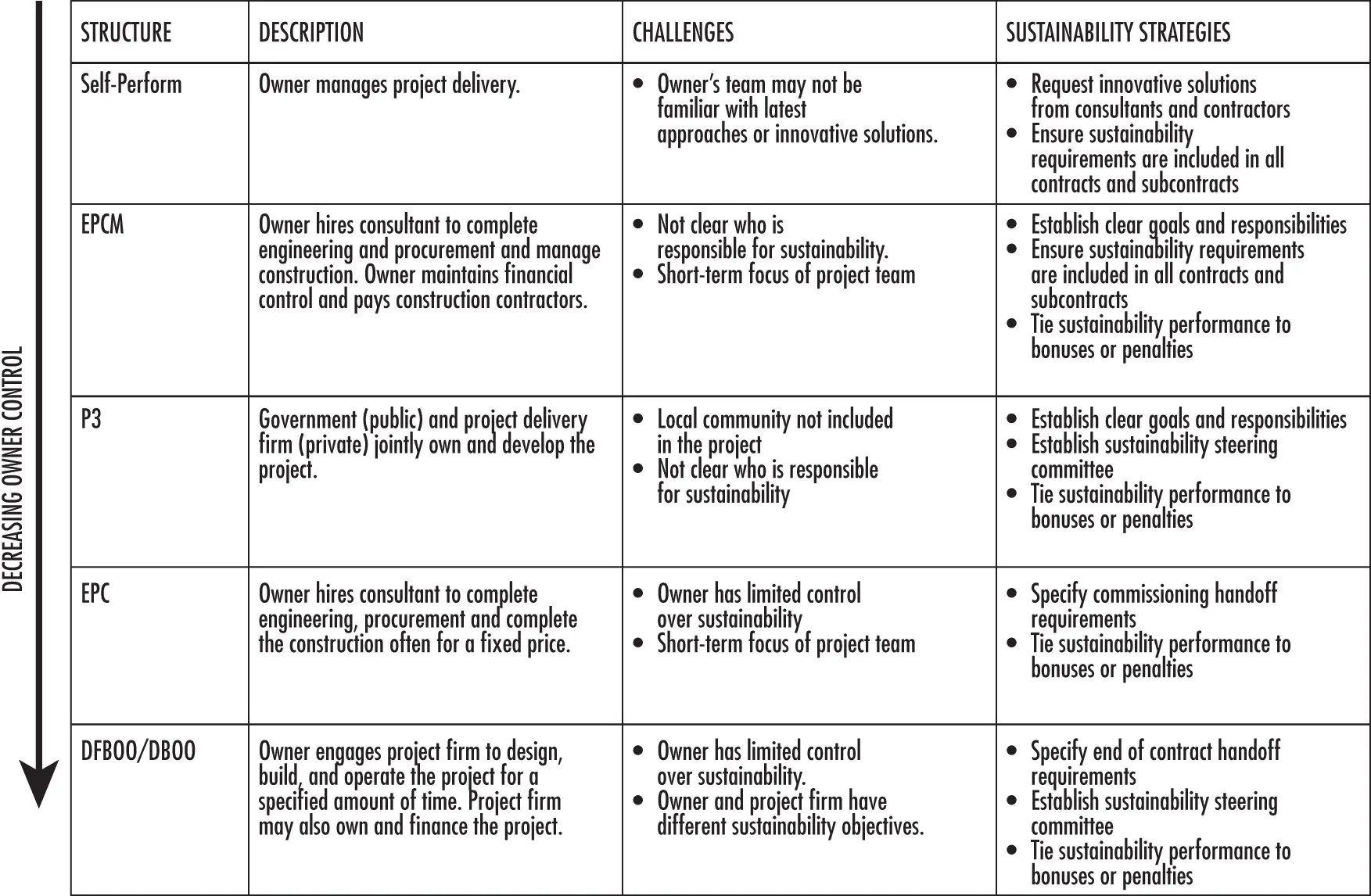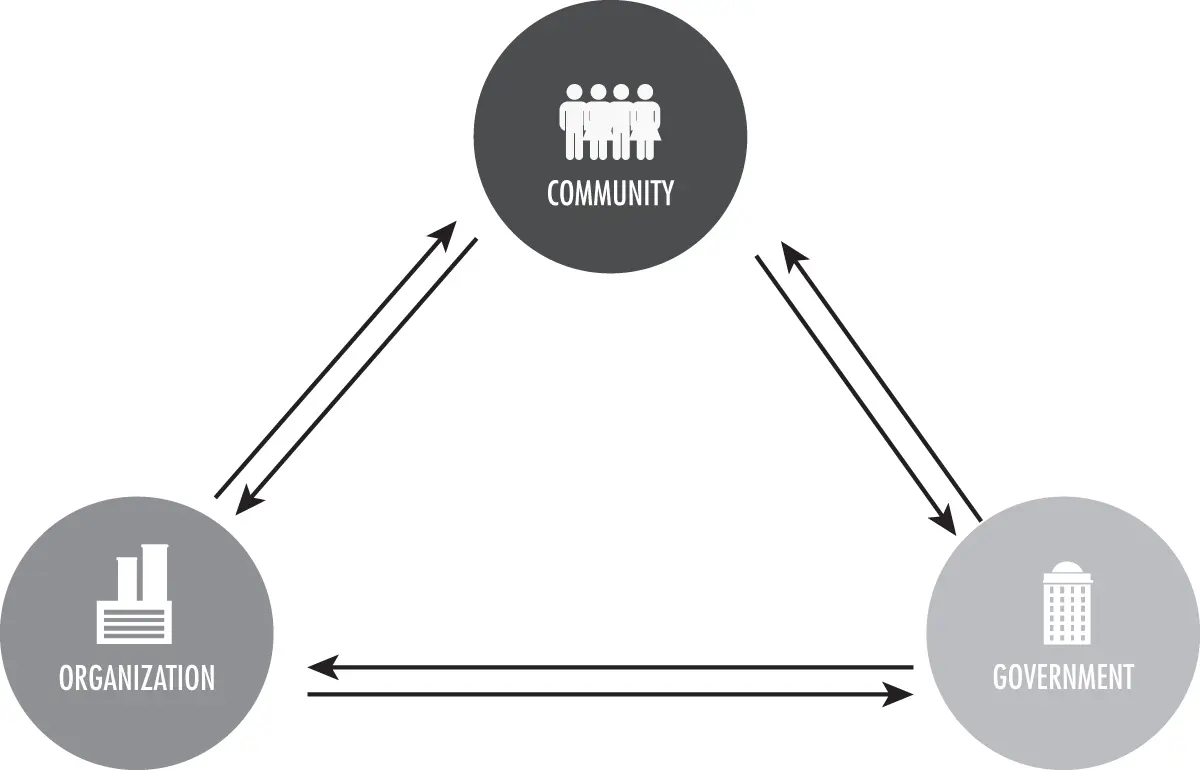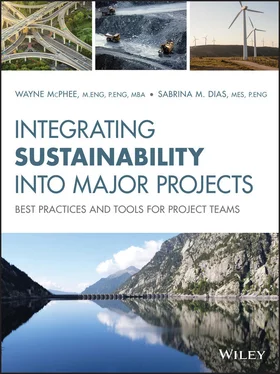
Figure 2.1Sustainability strategies for different project structures.
This section explores what we see as three categories of key players in a major project, and how they can interact throughout the project life to establish a framework for understanding some of the challenges and opportunities to integration of sustainability into projects. The key players involved in major projects can be divided into three broad categories: the organization, the government, and the local community.
The organization includes any group involved in the delivery of a project, including the owner organization, project delivery team, consultants, suppliers, contractors, and employees. Government includes the broad range of government departments such as economic development, taxation, regulatory approval, health, environment, and education. And the community includes the people that live in the area surrounding or near the project or are affected by the project's downstream impacts or transportation routes.
Traditionally, these three key players interacted in a basic linear structure (see Figure 2.2) where the organization engaged with the government over regulatory approvals and taxation, and the government and the community engaged through elections (if the project was located in a democracy), law enforcement, social services, and taxation. The organization and the community had some engagement (typically around local employment) but, overall, they had only limited formal engagement with each other.
Over time, as local communities have gained more understanding of project development and more influence (i.e. through social media), the relationship between the three players has evolved into a more complex structure where the organization, the government, and the community are all interacting as active players with each other, as illustrated in Figure 2.3. Obviously, this is still a gross oversimplification of the situation but understanding project development as a three-player model allows us to gain useful insights into the variety of interactions and the potential for conflict faced by each of the players.
At the core of this understanding is that organizations now require both official approvals and permits from the government and informal permission from the community to develop and operate the project. In the traditional linear model, an organization would seek permits from the government and then rely on the government to ensure that the local community does not prevent the project from being developed. In the new model, an organization still must engage with the government to get the required official permits, but now must also engage with the local community to gain and maintain community support. Too many organizations still rely on government approvals alone, and then are forced to delay project construction due to legal challenges or protests from an unsupportive local community.
This can be most challenging when the organization developing the project is led by a government entity where there may be a sense that they do not need to engage local communities and earn their support, since they are already representatives of the public. In these cases, the organization needs to understand the difference between the general public that the government represents (i.e. national or regional) and the local communities that are directly experiencing project impacts.

Figure 2.2Traditional organization, government, and community relationship.

Figure 2.3Modern organization, government, and community relationship.
The proposed approach, where the project organization embraces the three-player model and ensures that the community has input into the project, can help ensure that the local community has a seat at the negotiating table. In this model, the community benefits from the project and maintains a strong position of influence with both the organization and the government. Actively bringing the local community into the project development process may seem counterintuitive but local engagement can reduce project costs, provide a broader set of options for developing and operating the project facility, and reduce overall project risk.
2.5 Managing Time and Space
One of the key challenges with understanding how other groups and people will respond to your project is to understand their perception of the project in space (location) and time. Projects are typically short-term in duration (i.e. 3 to 10 years), which is usually at odds with sustainability goals that can be multigenerational. The brief time frame can create a very transactional, short-term approach to project delivery as opposed to a cooperative, longer-term approach that focuses on the full life–cycle impact of project development, operations and maintenance, and eventual decommissioning.
Project teams need to understand that they have a very different set of objectives than governments and local communities (see Table 2.1). To create better projects, teams need to expand their traditional short-term thinking to look beyond capital cost and construction schedule to consider long-term impacts on the environment and the local community, as well as the long-term relationships with project stakeholders.
Table 2.1Time and space for players Involved in major projects.
| Player |
Time Involved in the Project |
Space |
| Project team |
2 to 3 years |
Visit the project site |
| Government workers |
5 to 10 years |
Visit the region |
| Local community |
25+ years |
Live near the project site |
For project teams the timespan that they consider is essentially the time for project delivery from initial studies to commissioning and handover to the operations team, which typically takes between 5 and 10 years. In addition to this, individual team members may only work on the project for short periods of time, finish their piece of the design or construction, and then move on to the next project. Major projects may also start and stop with changes in personnel on the project team or a change in consulting firms, so that the typical person on a project team might spend only 2 to 3 years on a major project.
The timespan that government personnel will be involved in a project will vary depending on the government and government agency. Civil servants may spend a large part of their career with a single government agency, but politicians work on different timelines depending on when elections are scheduled, so the typical government employee might spend 5 to 10 years involved on a project.
Local communities have a much longer timespan of experience and engagement with a project. Although there may be short-term focus on jobs and economic benefits, there is also a longer-term focus on community success over generations so that their children and grandchildren also see positive benefits from the project.
The sense of space, location, and geography is also very different between the key players involved in a project. Project teams will typically not be from the local region and in many cases may never even visit the site but complete their design work from maps and drawings of the project site. The project team will have little personal stake in the project outcome other than to build on their experience and have a good project to add to their resume for their next job.
Читать дальше















